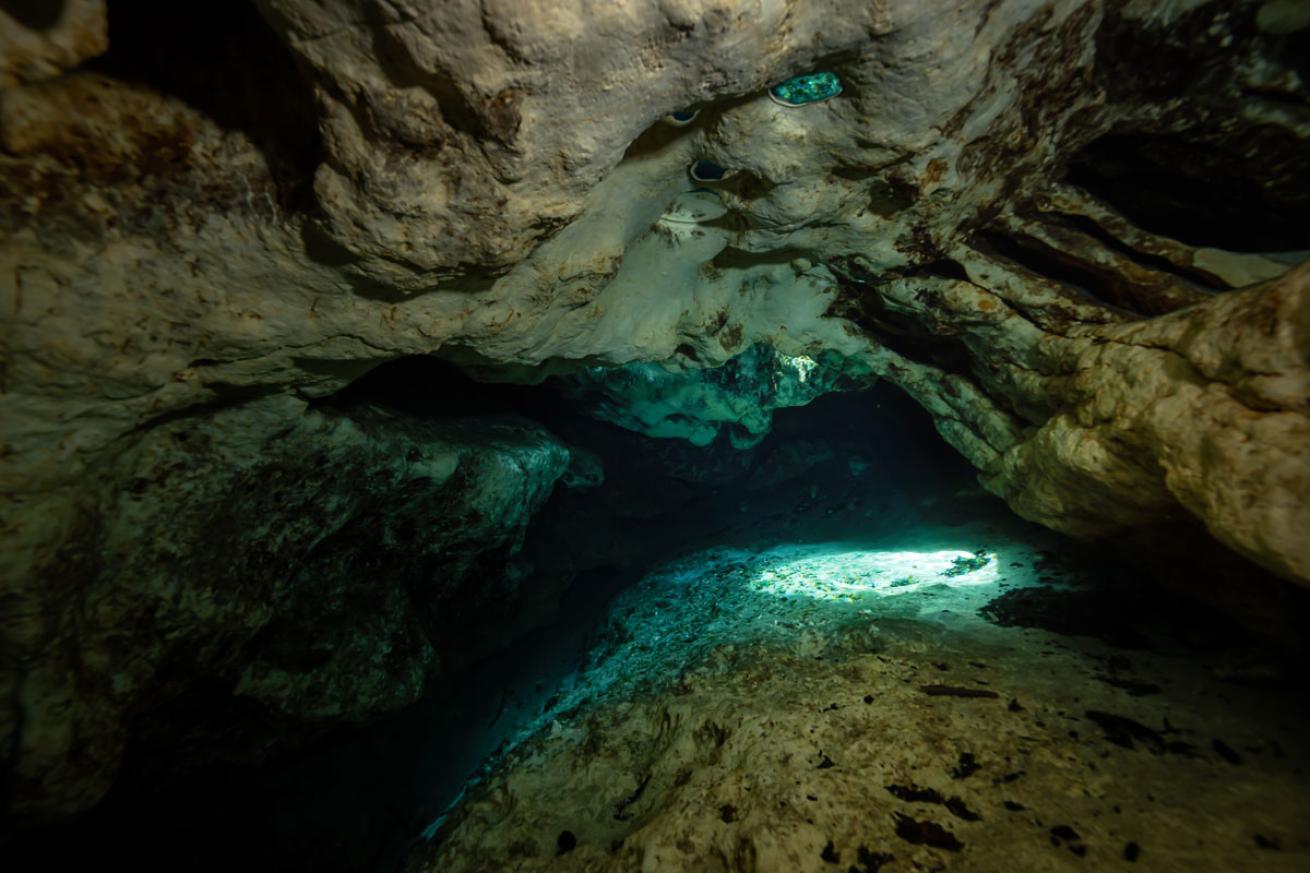What It’s Like to Discover New Lengths of Underwater Caves
It started as a quiet morning, with a solitary support diver helping us get in the water. Dives like this rarely start with high expectations. The higher the expectations, the greater the potential disappointment.

Shutterstock.com/EB Adventure PhotographyBeautiful view of an underwater cave formation in Florida.
Today, my buddy and I are navigating Cathedral sinkhole in Live Oak, Florida, with Karst Underwater Research, a local nonprofit I’ve been a member of for about eight years that’s dedicated to researching the Floridian aquifer. We’ve ventured deep into the Cathedral before but always left questioning the limits of its labyrinth.
Zooming through a cave by way of underwater scooter is like taking a long road trip. I find myself zoning out the way I would driving down the highway at night — not particularly thinking about anything at all, just cruising, watching shadows become illuminated around me as my headlights pass them by. Except down here, 190 feet below Earth’s surface, it’s walls of limestone in my field of vision instead of tree lines — and exits are in short supply.
I snap out of my travelers’ trance as we approach 21,380 feet, the end of the guideline we’d laid on previous dives. My buddy and I make a pit stop to tie off a new length of line, then speed off into distances unknown, becoming the only people in modern history who have seen this specific part of our planet.
For most of our journey, the cave measures 80 to 100 feet across, but we rarely see more than about 30 feet in front of us, as the cave’s walls have long been stained black by a thick coat of organic matter.
A few times, the limestone walls shrink to what we think might be the end of the system, but we squeeze through slits in the rock and are greeted with massive canyon-like passages, seemingly frozen in time but teeming with cave crayfish and tiny amphipods that show this primitive environment is still very much alive.
The line we lay is knotted in 10-foot intervals so we can easily calculate our mileage. And it is miles we end up diving: 26,930 feet, or 5.1 miles — a new world record for the longest dive into an underwater cave without resurfacing.
We could’ve explored farther, but after about four hours underground, we run out of line, and it’s time to call the dive. We tie off our last bit of line, record our final distance, and start our trek out.
By the time we get back and finish our nine-hour decompression stop, I’m already planning our next pilgrimage into the Cathedral. That’s the thing about cave diving — no matter how far you go, there’s always the lingering curiosity, the exhilaration of exploration, and the wonder of scientific discovery still to come.










